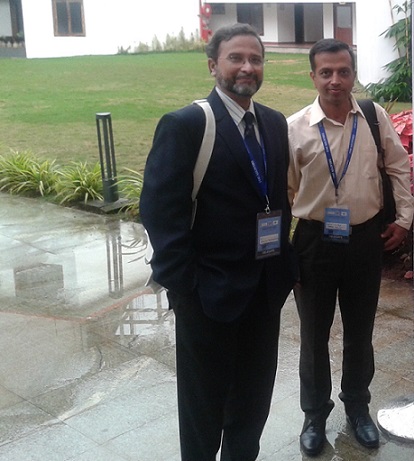Developed, urbanized districts have high HIV prevalence: study

Neucrad Health India June 23, 2019
News credit: Indian Science Wire (By Dr. Aditi Jain, June 20, 2019)
With over two million HIV infected individuals, India is home to one-third of the world’s HIV population. Although the national level data shows a downward trend, the decline is not uniform across states and districts.
A new study has found that underlying factors for the epidemic also vary from region to region, and region-specific strategies may be necessary for HIV control.
There is high prevalence of HIV in 63 districts in South and North-east regions of the country, the study has found. Of them, “better developed, urbanised districts with large population size, better socio-economic status of population are more likely to have consistently high HIV prevalence levels.” While planning HIV control strategies, the focus should be on districts which are showing signs of rapid urbanisation and socio-economic development, the study has suggested.
The factors responsible for the epidemic are complex and can be contrasting for different regions, restricting the use of a single approach for HIV control nationally. Therefore, continuous monitoring for prevalence and causes of disease at the district level is necessary for making control programs more effective.
Researchers used data from 2011 Census, HIV Sentinel Surveillance programme and District Level Household Survey-III and analysed trends from 2007 to 2012 in 640 districts. They correlated HIV prevalence with fourteen factors broadly belonging to categories – population profile; socio-economic factors; HIV and sexually transmitted infections, awareness and condom usage.
The analysis revealed that districts with high literacy, better socio-economic status, and higher proportion of population in reproductive age group and late marriages had consistently high HIV prevalence in all the regions except in southern states.

” The study also found that higher knowledge levels about the role of condom use for HIV prevention as well as the use of condoms correlates with reduced HIV cases in districts.”
Elaborating on this trend, researchers explained that often young educated individuals move to urban areas for better opportunities and are separated from family. With better income, they are ready to explore and often have sexual encounters with multiple partners before they get married. This increases chances of HIV. Researchers believe that since south India was first to face HIV upsurge, the HIV epidemic has evolved over time in these states, therefore not affected by factors like better socio-economic indicators like in other states.
“Our study has highlighted inter-regional variations in factors responsible for HIV prevalence. While implementing common strategies for prevention and control of HIV/ AIDS at the national level, additional regional approaches may also be necessary,” explained Dr Rajneesh Joshi, who conducted the study at Pune-based ICMR-National AIDS Research Institute while on a study leave from the Indian army where he is working as a public health specialist.
The study also found that higher knowledge levels about the role of condom use for HIV prevention as well as the use of condoms correlates with reduced HIV cases in districts.
However, high literacy and awareness about HIV/AIDS alone does not mean better low HIV prevalence, supplementing this knowledge with HIV prevention methods can only reduce the cases of HIV.
“Results of this study have been communicated to the National AIDS Control Organisation (NACO). We will continue our analysis to track the scenario following the introduction of test and treat policy by the program,” Dr Joshi said.
The study, among other things, has highlighted that the districts which are rapidly progressing towards urbanization and socio-economic development may see an increase in the number of HIV cases. The study further advocates the need to raise awareness of HIV prevention and use of condoms along with HIV in general.
The research team included Dr Sanjay M. Mehendale of Indian Council of Medical Research, New Delhi apart from Dr Rajneesh. The research published in the journal Plos One








